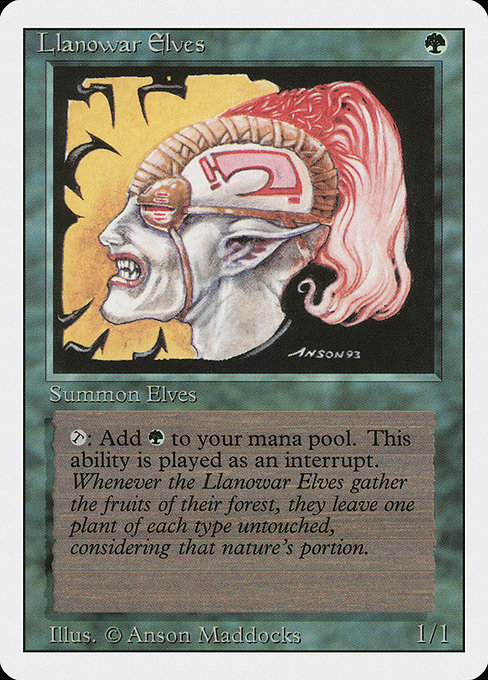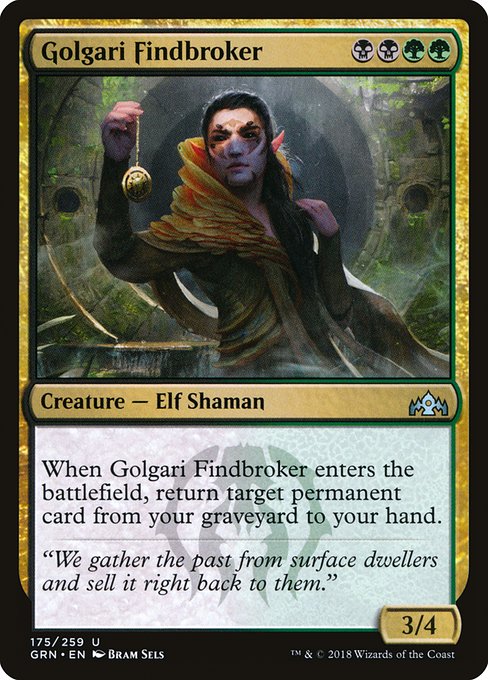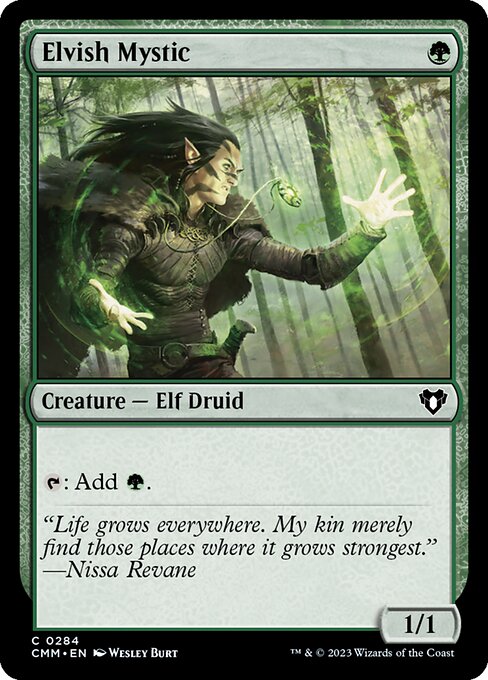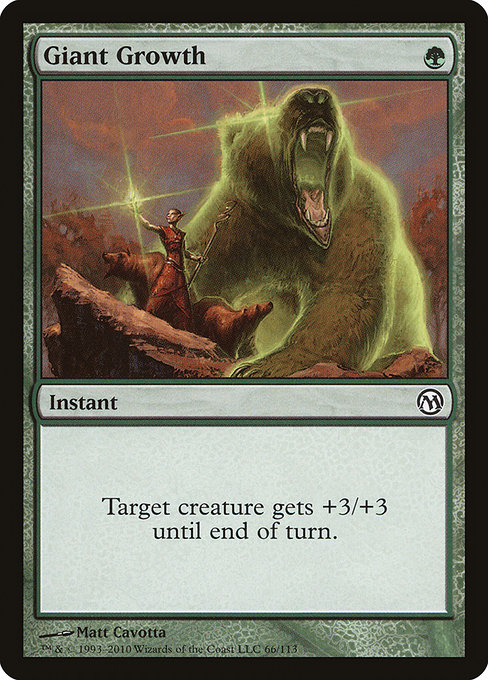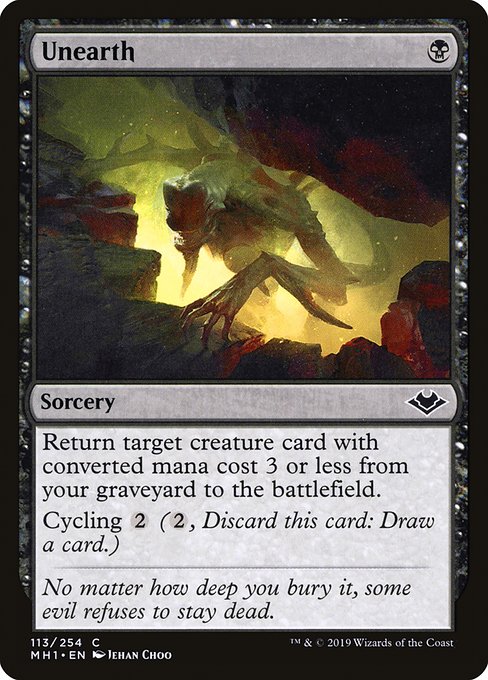
Unearth

Cards Mentioned in This Review
These cards are referenced in the strategy guide belowFull Analysis
Generated on 2025-06-28T21:54:14.355563 • Legacy FormatUnearth: A Versatile Necromantic Tool in the World of Magic
A Deceptively Simple yet Remarkably Powerful Card
Unearth is a deceptively simple yet remarkably versatile sorcery card in Magic: The Gathering. For the low cost of a single black mana, it allows you to return a creature card with a mana value of 3 or less from your graveyard to the battlefield. This simple effect, however, belies the card's depth and potential, as it can be utilized in a wide variety of strategies and archetypes, from aggressive reanimation tactics to value-oriented recursion engines.
Unearth's flexibility, efficiency, and synergistic potential make it a powerful tool for any black-based deck seeking to leverage the power of the graveyard. Its ability to cheat powerful creatures onto the battlefield, generate recurring value, and disrupt opponent's strategies has solidified its place as a staple in competitive and casual play alike.
Detailed Card Mechanics and Interactions
At its core, Unearth is a reanimation spell, allowing you to bypass the normal mana costs of your creatures and bring them back from the graveyard. The mana value restriction of 3 or less means that you'll typically be returning utility creatures, aggressive threats, or smaller-scale value engines, rather than the most massive threats in your deck.
This restriction, however, is not as limiting as it may initially seem. Many of the most impactful creatures in Magic have mana values of 3 or less, such as Grisly Salvage, Bloodsoaked Champion, Llanowar Elves, or Kroxa, Titan of Death's Hunger. By leveraging Unearth, you can reap the benefits of these creatures immediately, without having to pay their full mana costs.
Furthermore, the card's Cycling ability adds an extra layer of flexibility. By paying 2 mana to discard and draw a new card, you can effectively transform Unearth into a virtual cantrip, smoothing out your draws and providing you with additional options. This can be especially useful in the late game, when you may no longer have a suitable target in your graveyard or need to find a specific answer.
One key interaction to consider is how Unearth interacts with other graveyard-based mechanics and effects. Cards like Deathrite Shaman, Golgari Grave-Troll, or Golgari Thug can work in tandem with Unearth, either by providing additional ways to fill your graveyard or by synergizing with the creatures you reanimate. Similarly, Stitcher's Supplier, Satyr Wayfinder, and other self-mill effects can set up your graveyard for Unearth to leverage.
Understanding these rules interactions and technical details can help you maximize the effectiveness of Unearth in your deckbuilding and gameplay.
Strategic Uses, Combos, and Synergies
Unearth's versatility allows it to be utilized in a wide range of strategic contexts and deck archetypes. One of the most common uses is as a tempo-focused reanimation spell, allowing you to aggressively return threats like Bloodsoaked Champion or Scrapheap Scrounger to the battlefield and maintain ongoing pressure.
In this aggressive shell, Unearth can be combined with cards like Village Rites, Deadly Dispute, or Fiend Artisan to further fuel your graveyard and draw engine. By recursively reanimating creatures and generating card advantage, you can quickly overwhelm your opponent.
Alternatively, Unearth can be incorporated into more value-oriented strategies, where the goal is to leverage recurring creature effects and synergies. Cards like Gilded Goose, Priest of Forgotten Gods, or Kroxa, Titan of Death's Hunger can be repeatedly reanimated to generate ongoing value, while also threatening lethal damage.
One particularly potent combo involves Underworld Breach and Unearth. By repeatedly casting Unearth from your graveyard using Underworld Breach, you can chain together explosive turns, reanimating key creatures over and over again. This can lead to game-winning sequences, such as repeatedly bringing back Kroxa, Titan of Death's Hunger or Arclight Phoenix to overwhelm your opponent.
Unearth also shines in more controlling or midrange-oriented strategies, where it can function as a form of recursion and value generation. By reanimating creatures like Thragtusk, Ravenous Chupacabra, or Solemn Simulacrum, you can gain incremental advantages and disrupt your opponent's gameplan.
In formats with a higher density of small, impactful creatures, Unearth can even find a home in aggressive tribal strategies, such as Zombies or Goblins, where it can help rebuild your board after sweepers or trade-offs.
Deckbuilding Roles and Archetypes
Given its flexibility, Unearth can play a variety of roles in deckbuilding, fitting into a wide range of archetypes and strategies.
As a core component of aggressive reanimation decks, Unearth serves as a key engine piece, providing efficient and recurring threats to overwhelm the opponent. These decks often utilize synergistic cards like Village Rites, Deadly Dispute, and Fiend Artisan to fuel the graveyard and generate additional value.
In more midrange or control-oriented strategies, Unearth functions as a form of recursion and value generation, allowing you to repeatedly leverage the enter-the-battlefield effects or ongoing value of creatures like Thragtusk, Ravenous Chupacabra, or Solemn Simulacrum. This can help maintain board presence and disrupt your opponent's gameplan.
Unearth can also find a home in creature-based combo decks, such as those revolving around Underworld Breach, where it can be repeatedly cast to generate explosive turns and devastating synergies.
Beyond these more established archetypes, Unearth's versatility allows it to be incorporated into a wide range of other strategies, from tribal decks (Zombies, Goblins) to self-mill or graveyard-focused synergy decks. Its ability to efficiently reanimate key creatures makes it a valuable tool in a variety of deckbuilding contexts.
Format Viability and Competitive Context
Unearth's power and versatility have made it a staple in a variety of Magic formats, both in casual and competitive play.
In Standard, Unearth has seen significant play, often as a key component of aggressive reanimation strategies. Decks like Jund Sacrifice, Rakdos Midrange, and Golgari Food have all successfully incorporated Unearth as a means of generating recurring threats and value. Its efficiency and synergy with cards like Deadly Dispute and Fiend Artisan have made it a potent addition to these archetypes.
In Modern, Unearth has found a home in a variety of graveyard-based strategies, such as Dredge, Reanimator, and Dimir Cthulhu Midrange. Its ability to quickly reanimate creatures like Bloodghast, Vengevine, or Kroxa, Titan of Death's Hunger has made it a valuable piece in these decks, providing both aggression and recursion.
In Legacy and Vintage, Unearth has seen niche play, primarily in strategies that focus on leveraging the graveyard, such as Reanimator and Dredge. While the high-powered nature of these formats means that Unearth may not be the most efficient reanimation spell available, its low mana cost and flexibility can make it a worthwhile inclusion in the right builds.
In Commander, Unearth shines as a versatile tool for a wide range of black-based decks. Its ability to recursively reanimate key creatures can provide significant value and tempo advantages, especially in creature-centric strategies. Commanders like Meren of Clan Nel Toth, Chainer, Dementia Master, and The Gitrog Monster can all utilize Unearth to great effect.
Across these formats, Unearth's combination of efficiency, flexibility, and synergistic potential has made it a reliable and impactful card in the right decks and metagames. Its ability to generate value, disrupt opponents, and provide explosive tempo plays ensures that it will continue to be a relevant and powerful tool in the ever-evolving world of Magic: The Gathering.
Art, Flavor, and Historical Context
The art and flavor text of Unearth evoke a sense of dark, necromantic power, capturing the essence of reanimating a fallen creature from the depths of the graveyard.
The artwork, created by Chris Rahn, depicts a gruesome scene of a skeletal hand emerging from the earth, grasping the lifeless body of a humanoid figure. The background is shrouded in an eerie, otherworldly glow, hinting at the dark magic at work.
The flavor text, "The dead rise at the call of the Mephidross," further reinforces the necromantic theme, referencing the Mephidross, a blighted, lifeless region from the Mirrodin block of Magic sets. This connection to the Mephidross and its associated undead horrors helps to cement Unearth's place as a quintessential black-aligned spell, tapping into the power of death and the graveyard.
Historically, Unearth first appeared in the Mirrodin Besieged expansion, released in 2011. At the time, the Mirrodin block was undergoing a major transformation, with the once-vibrant plane being corrupted and overtaken by the sinister influence of the Phyrexians.
The introduction of Unearth, along with other graveyard-focused cards like Golgari Grave-Troll and Memoricide, helped to solidify the role of the graveyard as a critical resource in the Mirrodin Besieged environment. This emphasis on the graveyard would continue to be a major theme in subsequent sets, shaping the development of many black-based strategies in the years to come.
Key Points Summary
- Unearth is a versatile sorcery that allows you to reanimate a creature card with a mana value of 3 or less from your graveyard to the battlefield.
- Its efficiency, flexibility, and synergistic potential make it a powerful tool in a wide range of black-based strategies, from aggressive reanimation to value-oriented recursion.
- Unearth can be utilized in various archetypes, including tempo-focused reanimation decks, midrange or control strategies, and combo-oriented graveyard strategies.
- The card's power and versatility have made it a staple in competitive formats like Standard, Modern, and Commander, where it continues to find success in a variety of decks.
- Understanding the technical rules interactions, such as the mana value restriction and timing considerations, can help you maximize the effectiveness of Unearth in your gameplay.
- The art and flavor of Unearth evoke a sense of dark, necromantic power, connecting it to the Mephidross and the Phyrexian corruption of the Mirrodin plane.
Conclusion
Unearth is a deceptively simple yet remarkably powerful card in Magic: The Gathering. Its ability to efficiently reanimate creatures from the graveyard, combined with its flexibility and synergistic potential, make it a valuable tool in a wide range of black-based strategies and archetypes.
Whether you're looking to build an aggressive reanimation deck, a value-oriented midrange strategy, or a combo-focused graveyard deck, Unearth can play a crucial role in your success. Its versatility and competitive viability across multiple formats ensure that this necromantic sorcery will continue to be a staple in the Magic ecosystem for years to come.
By understanding the card's mechanics, strategic uses, and rules interactions, players can leverage Unearth to their advantage and unlock new avenues of deckbuilding and gameplay. As the game evolves, Unearth's adaptability and relevance will undoubtedly continue to shine, cementing its place as a cornerstone of black-aligned Magic.
